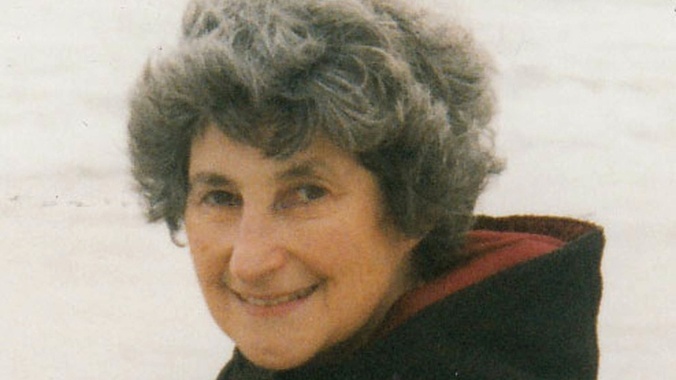
Fiercely nonsectarian, outspoken and with a keen mind, she had a deserved reputation for speaking out against perceived injustices.
OBITUARY
SADIE FORMAN (1929 – 2014)
Sadie Forman, one of the most unconventional, interesting and lovably fighters in the South African anti-apartheid movement, died on December 11, aged 85.
She spent the last years of her life in Britain, having moved there in 2007 on health grounds, after nearly a decade working as a volunteer in the library and archives at the University of Fort Hare. In 2012 she returned to receive an honorary doctorate.
She married Lionel Forman, perhaps one of the brightest stars in the South African anti-apartheid and communist movements, in 1952. He was one of the 156 men and women in the marathon treason trial that began in 1956. An advocate, historian, activist and prolific writer, he was just 32 when he died in 1959, five days after the birth of their third child, Sara.
Forman had to earn a living, she noted in her 2008 memoir Lionel Forman: A Life Too Short, but this was easier said than done. She was harassed by the police and served with a banning order that restricted her to a 1.6km radius of her home.
She was forbidden to enter “any factory premises or educational institutions”, but was eventually allowed to take a job as a proofreader, on condition she was housed in an enclosed office and only one worker at a time be allowed to enter it.
Denied a passport, Forman applied for an exit permit and left in 1969. With children Karl, Frank and Sara she set up home in London, qualified as a schoolteacher and gained a second degree (in psychology).
Fiercely nonsectarian, outspoken and with a keen mind, she was also a notoriously bad timekeeper, resulting in her many friends fondly referring to her as “the late Mrs Forman”.
She had a deserved reputation for speaking out against perceived injustices, even within the ANC to which she remained firmly attached, although she was increasingly and constructively critical of it and its leadership over the years.
She arrived at Fort Hare in 1996 and fell in love with the village of Alice; she became something of an Alice institution herself.
Even when her health and memory were failing, she did not want to leave. Finally prevailed upon by Sara, she reluctantly returned to the place of her exile.
A fellow activist and friend, Douglas Maquina, wrote (in isiXhosa) of Lionel Forman when he died that he was “a small man, but … as big as Table Mountain”. The words apply equally to Sadie Forman: a small woman, but certainly as big as Table Mountain.
FRENCH VERSION
SADIE FORMAN (1929 – 2014)
Sadie Forman, un des combattants les plus non conventionnelles,intéressants et attachants dans le mouvement de lutte contre l’apartheid sud-africain, est décédé le décembre? 11, âgées de 85ans.
Elle a passé les dernières années de sa vie en Grande-Bretagne,après avoir déménagé là en 2007 pour des raisons de santé,après près de dix ans travaillant comme bénévole dans labibliothèque et les archives à l’Université de Fort Hare. En 2012,elle revient pour recevoir un doctorat honoris causa.
En 1952, elle épouse Lionel Forman, peut-être l’une des étoilesplus brillantes dans les mouvements communistes et de lutte contre l’apartheid sud-africain. Il fut l’un des 156 hommes et desfemmes dans le procès pour trahison marathon qui a débuté en1956. Un avocat, l’historien, l’écrivain activiste et prolifique, il avaittout juste 32 quand il est mort en 1959, cinq jours après lanaissance de leur troisième enfant, Sara.
Forman a dû gagner sa vie, elle a noté dans ses mémoires 2008Lionel Forman: A la vie trop brève, mais c’était plus facile à direqu’à faire. Elle a été harcelée par la police et servie avec un ordred’interdiction lui limité à un rayon de 1,6 km de chez elle.
Elle a été interdit d’entrer « toute enceinte de l’usine ou lesétablissements d’enseignement », mais a été finalement autoriséeà prendre un emploi comme correcteur d’épreuves, à conditionqu’elle logeait dans un bureau fermé et qu’un travailleur à la foisêtre autorisés à entrer.
Refuser un passeport, Forman a demandé un permis de sortie et alaissé en 1969. Avec enfants Karl, Frank et Sara, elle a mis en placela maison à Londres, qualifié comme un instituteur et a obtenu unsecond diplôme (en psychologie).
Farouchement laïque, ouvertement et avec un esprit vif, elle étaitaussi un chronométreur notoirement mauvais, d’où ses nombreuxamis affectueusement se réfère à elle comme « la fin Mme Forman».
Elle avait dénoncé les injustices perçues, même au sein de l’ANC àlaquelle elle est restée fermement attachée, même si elle estconstructive et de plus en plus critique de celui-ci et sonleadership au fil des ans une réputation méritée.
Elle arrive à Fort Hare en 1996 et tombé en amour avec le villaged’Alice ; elle est devenue quelque chose d’une institution de Aliceelle-même.
Même quand sa santé et la mémoire n’existait pas, elle ne voulaitpas quitter. Enfin persuader par Sara, elle revient à contre-coeurau lieu de son exil.
Un autre militant et ami, Douglas Maquina, écrit (en xhosa) deLionel Forman quand il est mort qu’il était “un petit homme,mais… gros comme une montagne de la Table“. Les motss’appliquent également à Sadie Forman : une petite femme, maiscertainement aussi grande que la montagne de la Table.


